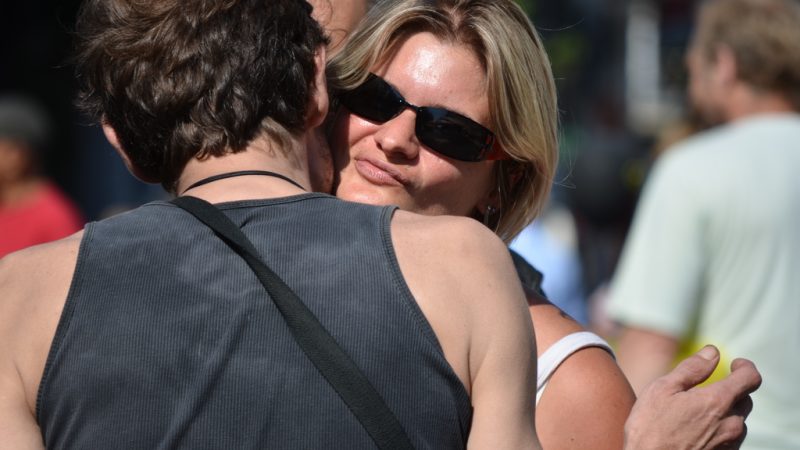How to Say Hi in Dutch Language: Learning how to say hi in Dutch is a fun and practical first step to speaking the language, especially if you plan to travel to the Netherlands, Belgium, or any other Dutch Speaking region. Whether you’re visiting as a tourist, relocating for work, or simply learning Dutch for fun, understanding common greetings can help you feel more at home and make meaningful connections.
This guide will introduce you to 10 useful Dutch greetings for everyday use, along with the appropriate contexts for each. Let’s dive into these friendly expressions and enhance your Dutch vocabulary!
How to Say Hi in Dutch Language: Hallo – The Universal Hi
Hallo is the most straightforward way to say hi in Dutch. It’s nearly identical to the English hello and is used in both formal and informal settings. This greeting is easy to remember and versatile enough to use with strangers, colleagues, and friends.
You can use Hallo when greeting someone face to face, answering the phone, or starting a conversation online. Its universal nature makes it one of the first greetings you’ll hear when interacting with Dutch speakers.
Example
Dutch: Hallo! Hoe gaat het?
English: Hello! How are you?
How to Say Hi in Dutch Language: Hoi – The Friendly Hi
Hoi is an informal and friendly greeting, similar to hi in English. It’s commonly used among friends, family, and peers. The relaxed tone of Hoi makes it perfect for casual conversations.
When you’re in the Netherlands, you’ll often hear people saying Hoi as they pass each other on the street or greet someone in a friendly environment. It’s a light and cheerful way to say hello without feeling too formal.
Example
Dutch: Hoi! Wat leuk je te zien!
English: Hi! Great to see you!
Goedendag – Good Day
Goedendag is the formal way to say good day in Dutch. It’s used during the day in professional or more respectful settings. You might use Goedendag when greeting someone in an office, meeting, or formal event.
While Goedendag is not as common in casual conversations, it’s still widely recognized and appreciated when speaking with older people or in formal circumstances.
Example
Dutch: Goedendag, meneer! Hoe kan ik u helpen?
English: Good day, sir! How can I help you?
Goedenmorgen – Good Morning
Goedenmorgen (pronounced like khoodenmorgen) is used to greet someone in the morning. It’s the Dutch equivalent of good morning and is often used until around noon.
You’ll likely hear this phrase at cafes, workplaces, or in morning conversations. It’s polite and can be used in both formal and informal contexts.
Example
Dutch: Goedenmorgen! Heb je al ontbeten?
English: Good morning! Have you had breakfast yet?
How to Say Hi in Dutch Language: Goedemiddag – Good Afternoon
Goedemiddag is how you say good afternoon in Dutch. You’ll typically hear this greeting from noon until early evening, making it ideal for use during lunch breaks or afternoon meetings.
While it’s more common in professional environments, it can also be used casually. Saying Goedemiddag is a polite way to acknowledge someone’s presence during the day.
Example
Dutch: Goedemiddag! Hoe gaat het op werk?
English: Good afternoon! How is work going?
How to Say Hi in Dutch Language: Goedenavond – Good Evening
When the day transitions into the evening, you can use Goedenavond to greet people. This phrase is used after around 6 PM and serves the same purpose as good evening in English.
It’s a polite and formal greeting, often heard in restaurants, evening gatherings, or when meeting someone later in the day.
Example
Dutch: Goedenavond, mevrouw! Geniet van uw avond.
English: Good evening, madam! Enjoy your evening.
Hey – Casual and Cool
Hey is a modern and casual greeting borrowed from English, which has found its way into Dutch slang. You can use Hey with friends or people you’re familiar with. It’s a relaxed and informal way of saying hi that’s perfect for everyday situations.
You’ll often hear young people using this greeting among their peers. It’s quick, easy, and universally understood.
Example
Dutch: Hey! Hoe gaat het met je?
English: Hey! How’s it going?
Dag – Short and Sweet Goodbye or Hello
Dag can mean both hi and bye depending on the context, similar to the Italian ciao. While it’s often used as a farewell, it can also serve as a greeting, particularly in informal settings.
This dualuse makes Dag a versatile phrase that you’ll often hear in short, friendly conversations.
Example
Dutch: Dag! Leuk je te zien.
English: Hi! Nice to see you.
Hee – Informal and Quick
Hee is another casual greeting, pronounced just like hey in English. It’s mostly used between friends or people who are familiar with each other. This greeting is often followed by an additional phrase like hoe gaat het? (how are you?), making it a quick and informal way to start a conversation.
Hee is commonly heard in texting or casual online communication as well.
Example
Dutch: Hee! Hoe was je weekend?
English: Hey! How was your weekend?
Alles goed? – How Are Things?
Though not exactly hi, Alles goed? is an informal way to greet someone while also asking if everything is fine. It translates to Everything good? in English and can be used as a friendly and caring way to greet someone.
This phrase shows that you’re interested in the wellbeing of the person you’re greeting and is commonly used in friendly interactions.
Example
Dutch: Hoi! Alles goed?
English: Hi! Everything good?
Conclusion
How to Say Hi in Dutch Language: In Dutch culture, greetings play an important role in setting the tone of a conversation, and learning a few of these essential phrases can go a long way in making connections. From formal expressions like Goedendag to informal ones like Hoi and Hey, you can use these phrases in various settings, from the workplace to casual gatherings with friends.
By mastering these 10 Dutch greetings, you’ll not only be able to say hi in different ways but also make a great impression on the people you meet. Whether you’re in a formal meeting or casually greeting friends, these phrases will help you navigate Dutch conversations with confidence and ease.
FAQs
1. What is the most common way to say hi in Dutch?
The most common way to say hi in Dutch is Hallo. It’s versatile, easy to use, and appropriate in both formal and informal situations.
2. Is Hoi informal or formal?
Hoi is an informal greeting, typically used among friends, family, and people you are familiar with. It’s equivalent to saying hi in English.
3. Can Dag be used to say both hello and goodbye?
Yes, Dag can be used to greet someone or to say goodbye, much like the Italian ciao. The context will help determine its meaning.
4. What is the difference between Goedendag and Goedemiddag?
Goedendag is a more general way to say good day, while Goedemiddag specifically means good afternoon and is used after noon until the early evening.
5. Is it common to use English greetings like Hey in Dutch?
Yes, Hey is commonly used in Dutch, especially among younger people. It’s a casual and informal greeting borrowed from English.
Also read: Amsterdam Green Place: 10 Must-Visit Eco-Friendly Spots









